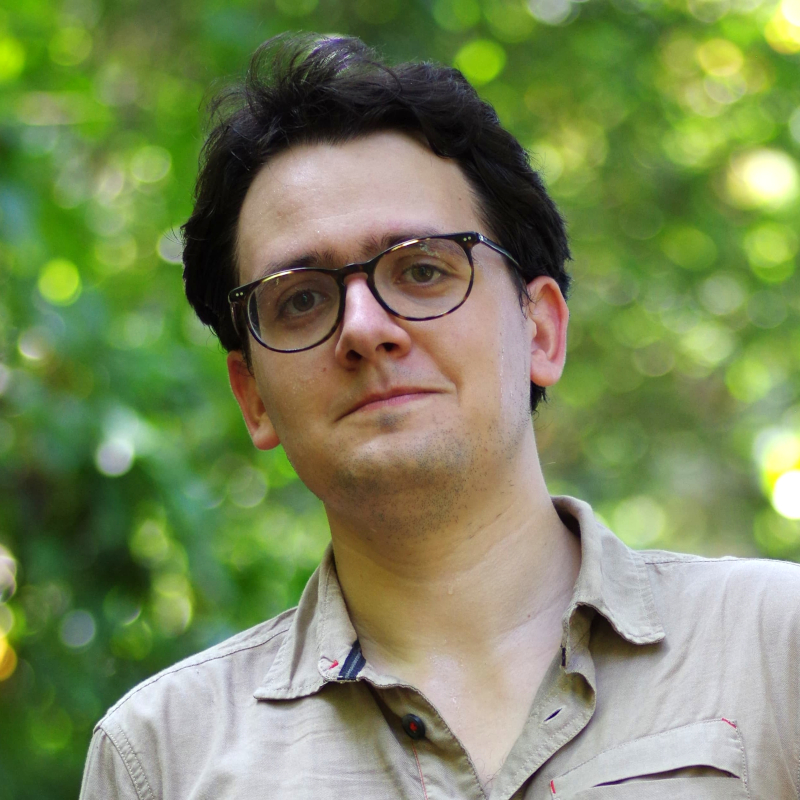We hear from finalist, Antoine Guiguet, about his research.

Last week we shared the thoughts of one of our 2023 Best Paper Prize finalists about their work in light of the competition relaunching this year. In this penultimate post, we speak to another finalist, Antoine Guiguet, about his research article 'Extreme acidity in a cynipid gall: a potential new defensive strategy against natural enemies'.
Tell us about yourself and your research article
I am an entomologist specializing in plant-insect interactions. My research examines the molecular interactions between herbivorous insects and their host plant and their evolution. Since my PhD, my research has focused on gall-inducing insects. I am searching for the molecular mechanisms of gall formation and the evolution of the gall-inducing lifestyle in insects.
The research for this article was a beautiful mix of serendipity and stimulating collaboration. My main project was to study the morphology and gene expression of venom glands of gall wasps, whose venom is suspected to contribute to gall induction. This research required me to collect many different species of oak gall wasps, which familiarized me with the amazing diversity of gall morphologies induced by this group of insects. Given that galls have a defensive function for the insects that induce them, the diversity of their morphological traits (shape, size, histology etc..) indicates diverging defensive strategies. I have this in mind when observing a gall with a peculiar morphology. Discussing with my research team at Penn State (Heather Hines, John Tooker, Andy Deans), we were all amazed by the Translucent Oak Gall and its juicy grape appearance. “It may be tasty” we thought. The story could have ended there, but Andy was brave enough to taste one. The experience dissipated any hope of turning this gall into a commercial fruit: no flavor, just sourness. This intrigued me, as galls are rather known for their bitterness due to their high tannin concentration. With the help of my friend and colleague Kadeem Gilbert, we measured the pH of the Translucent Oak Gall tissues. I was very surprised when I realized how low it was! With my research team, I decided to characterize the organic acid composition of the gall, so I contacted Jared Ali and Nate McCartney for their chemical Ecology expertise. Together we found that, in terms of organic acid composition, the Translucent Oak Gall is more like a Granny Smith apple than a lemon. We know now that not all oak galls accumulate tannins, others such as the Translucent Oak Gall accumulate malic acid - but probably for the same function: defense against the enemies of the gall-inducing insect.
Did you expect to be a finalist in our inaugural competition? And do you recommend that other early career researchers enter this year’s competition?
I did not have the competition in mind, so it was a surprise. I recommend people to try, why not?
What’s next for you and your work?
I just started a postdoctoral fellowship at the Naturalis Biodiversity Center in Leiden in the Netherlands, during which I will continue to study the evolution and molecular processes of gall formation by insects – but now with a focus on micromoths.
And finally, do you have any advice for upcoming generations of scientists in your field?
Take time to observe, to contemplate the organisms you study. You will gather information about anatomy, ecology, or behavior that – at first – appears useless for your project but can turn out to be highly beneficial for your research. It can help you understand why the experiment fails, suggest an alternate interpretation of the results, or even lead to a new research project like my article. Purposeless observation is a good way to let serendipity occur and enrich our research. On this topic, I recommend the reading of “A Feeling for the Organism: The Life and Work of Barbara McClintock” from Evelyn Fox Keller (passed away in 2023) that explores McClintock’s art of observation.
Please visit the blog next week for the final post in our 2023 finalists’ series. All the successful entrants from 2023 can also be found on our special collection page. In the meantime, please do enter our competition or contact the editorial office for more information.
------------------------------------------------------------------
Image credits:
Antoine Guiguet profile picture, kindly sent by Antoine.
